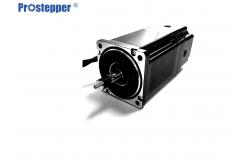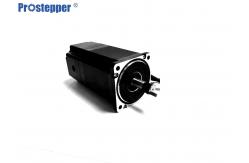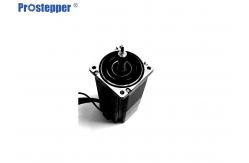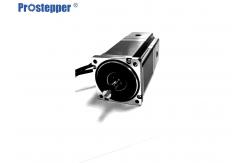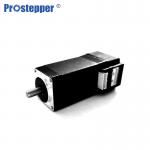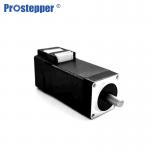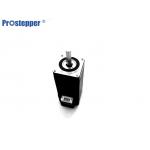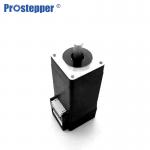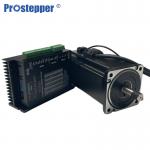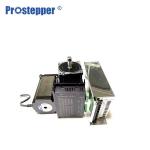NEMA34 86mm Encoder Stepping Motor Standard Type 1.8 step motor
Product description - Mechanical size 100% meet the requirements, to ensure that there is
no greater error in the use proces
- High reliability, easy maintenance.Motor rotor structure accurate,
no loss of step.Rotor special material, not stuck machine
- Online testing of technical parameters to ensure the consistency of
data product parameters
- Stepper motors are economical, accurate, and easy to control, and
they can operate reliably in a variety of environments (depending
on the level of protection IP chosen) preferably in machines with
additional enclosures or in clean environments
- The material is selected from well-known manufacturers at home and
abroad. The advantages are light weight, good heat dissipation
performance, good thermal conductivity, die-casting, good
plasticity, higher elongation than iron, low noise, good motion
stability, the disadvantages are high price, low hardness
Specifications | Holding Torque | 8.5N.m | | Related Current | 6A/Phase | | Resistance | 0.54Ω/Phase | | Inductance | 3.5MH/Phase | | Inertia | 650g.cm² | | Index | × | | Output | Differental | | Encoder Resolution | 1000CPR
|
Encoder Specifications | Model | E1K | E2K5z | | Resolution | 1000cpr/4000ppr | 2500cpr/10000ppr | | Type | Incremental encoder | Incremental encoder | | Output Mode | Differental | Differental | | Output Signal | A+A-;B+B- | A+A-;B+B-;Z+Z- | | Supple Voltage | 5VDC±5% | 5VDC±5% |
Speed/Torque Characteristics(Reference Value)
Working principle of stepper motor - To make the motor shaft turn, first one electromagnet is given
power, which makes the gear’s teeth magnetically attracted to the
electromagnet’s teeth. The point when the gear’s teeth are thus
aligned to the first electromagnet, they are slightly offset from
the next electromagnet. So when the next electromagnet is turned ON
and the first is turned OFF, the gear rotates slightly to align
with the next one and from there the process is repeated. Each of
those slight rotations is called a step, with an integer number of
steps making a full rotation. In that way, the motor can be turned
by a precise. Stepper motor doesn’t rotate continuously, they
rotate in steps. There are 4 coils with a 90o angle between each
other fixed on the stator. The stepper motor connections are
determined by the way the coils are interconnected. In a stepper
motor, the coils are not connected. The motor has a 90o rotation
step with the coils being energized in a cyclic order, determining
the shaft rotation direction. The working of this motor is shown by
operating the switch. The coils are activated in series in 1-sec
intervals. The shaft rotates 90o each time the next coil is
activated. Its low-speed torque will vary directly with current.
Advantages of Stepper Motor:- 1. The rotation angle of the motor is proportional to the input
pulse.
- 2. The motor has full torque at standstill.
- 3. Precise positioning and repeatability of movement since good
stepper motors have an accuracy of 3 – 5% of a step and this error
is noncumulative from one step to the next.
- 4. Excellent response to starting, stopping, and reversing.
- 5. Very reliable since there are no contact brushes in the motor.
Therefore the life of the motor is simply dependant on the life of
the bearing.
- 6. The motor’s response to digital input pulses provides open-loop
control, making the motor simpler and less costly to control.
- 7. It is possible to achieve very low-speed synchronous rotation
with a load that is directly coupled to the shaft.
- 8. A wide range of rotational speeds can be realized as the speed
is proportional to the frequency of the input pulses.
|

